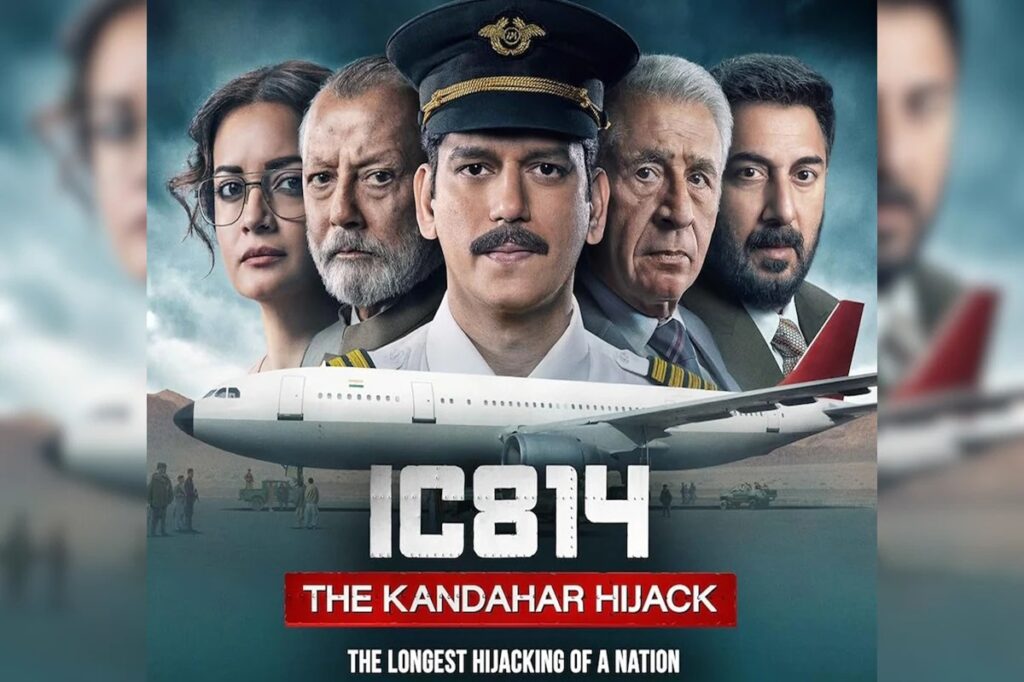
The Kandahar Hijacking is a black day in Indian history. Until Christmas Day, 1999, Indian Airlines Flight IC 814 was the focus of a dramatic international crisis on what had been up to that point a routine flight originating at Tribhuvan International Airport in Kathmandu, Nepal, en route to Indira Gandhi International Airport in New Delhi, India.
Table of Contents
The aircraft, an Airbus A300, had on board 176 passengers and 15 crew members. Somewhat inside Indian airspace, it was hijacked by five armed terrorists from the Pakistan-based extremist group Harkat-ul-Mujahideen. What is generally referred to nowadays as the Kandahar hijacking sent shockwaves across the world, culminating in a high-stakes standoff in Kandahar, an Afghanistan city controlled by the Taliban.
Hijacking and Its Aftermath
Once the plane had crossed into Indian airspace, the hijackers armed themselves with knives and guns and entered the cockpit. The hijackers demanded the release of militants imprisoned in India and a ransom amount that was not revealed. The pilots were forced to take the flight over a different course, first making an emergency stop in Amritsar, India, due to fuel limits. After refueling, permission to land in Lahore, Pakistan was denied, and the aircraft was diverted to Dubai, where several passengers were released. Finally, the aircraft landed in Kandahar, which is under Taliban control, and the start of a harrowing week-long standoff began.
The audacity of this hijacking and the involvement of an international terrorist group sent the Indian government into shock and crisis over diplomatic and security issues. The passengers’ lives were at stake, the hijackers were in control, and negotiations by India were under duress.
The most important demand of the hijackers was the release of three high-profile terrorists from Indian custody-namely, Maulana Masood Azhar, Mushtaq Ahmed Zargar, and Ahmed Omar Saeed Sheikh. The situation was further complicated by the geopolitical dynamics in the region, more precisely by the support given by the Taliban to the hijackers themselves.
Consequences on a Political and Diplomatic Level
The Kandahar hijacking tested the crisis management abilities of the Indian government and brought to the fore inadequacies in its counterterrorism framework. The week-long standoff was punctuated by heavy negotiations between the Indian officials, the Taliban, and intermediaries.
After days of unsuccessful negotiations and concern for the safety of hostages, the Indian government decided to give in to the demands put forward by the hijackers. In exchange for the release of all hostages, on December 31, 1999, three terrorists were released, thereby ending the whole affair affair very traumatic with deep scars and a continuing sense of national humiliation.

The decision to release the terrorists saw widespread criticism and debate in India about governmental mishandling and questions concerning the efficacy of its anti-terrorism policies. This incident shook Indian public opinion and policy to its roots, bringing about wide-ranging changes in aviation security protocols, counter-terrorism measures, and specialist anti-hijacking units.
Legal Process and the Contribution of Delhi High Court
In the post-hijacking case, various suspects had to go through a complicated interplay of law, diplomacy, and security during their prosecution. The Delhi High Court also played an important role in the adjudication of matters related to hijacking. In 2008, it confirmed life imprisonment for the accused in the case to show just how grave the crime was and its repercussions on national security. The judgments passed by the court outlined that rigid legal measures were required to restrict acts of terrorism and hijacking.
Instead, the trial itself brought out some of the difficulties the court system has in dealing with international terrorist cases. The standard of proof, multiple jurisdiction involvement, and the political sensitivities- all of which made the trial that much more complicated because of their occurrence. How the hijacking case of IC 814 was dealt with by the Delhi High Court became a significant landmark in the jurisprudence concerning terrorism offenses in India.
Cultural Impact: The Kandahar Hijack Movie and Netflix Interest

The fascinating story of the IC 814 hijacking has held the public’s interest far beyond the hijacking itself. It has been sensationalized in all types of media, but that just testifies to its continued grip on the psyche.
The whole experience has been recently put into a movie within the last couple of years, “Kandahar” directed by Major Ravi, a retired officer in the Indian Army. It is “based on a true story, ” and tries to show the terror, the emotional and psychological torture of the hostages and their families, the government of India’s strategic dilemma.
The whole incident has become the subject of a movie within the last few years, “Kandahar” directed by Major Ravi, a retired officer from the Indian Army. Based on the terrifying true story, the movie tried to show the hostages and their families emotional and psychological trauma, as well as the government of India’s strategic dilemmas.
Also, with Netflix and other streaming services, there has been a renewed interest in the Kandahar hijacking as a subject for documentary and dramatic study. Oh, If Netflix ever decides to do a movie about the hijacking of IC 814, it would surely bring the story to an international level, giving the viewer a better understanding of international terrorism, and the innocent human beings caught in the middle of hostage crises, and the many different gears that a government must go through when under pressure.
The events of the story can be better understood by an international audience through such media, including the geopolitical workings of the late 90’s and the development of modern terrorism.
Conclusion
Thus, the hijacking of IC 814 at Kandahar remains among the most dramatic and sentimental events in Indian and world aviation history. The incident exposed the international aviation industry to terrorist attacks and marked a turn in the spoiling of relations between the two countries-a shape that would be taken by India’s counter-terror policy for years to come.
Since the event has been revisited so much both in popular terms and legal and academic, it’s rather difficult to let it slip one’s mind as far as terrorism is concerned, along with the intrinsic dance of security, diplomacy, and justice that has to be played to deal with these types of threats. IC 814 flight of horrors continuously haunts the courtrooms, silver screen, and everything; a memory that reminds all societies that they should never sleep on the terrorism monster.
Disclaimer
In this article, information related to a particular topic has been collected from various sources, the purpose of which is only to increase the knowledge of the readers and it does not confirm the existence of any disease and its treatment. Health Alpha does not take any responsibility for any such information.
Views: 14




Hi! I know this is kiknda off topic however I’d figured I’d ask.
Would you be interested in trading links orr maybe guest authoring a blog article or vice-versa?
My website goes over a lot of the samme topics as yours and I feel we
could greatly benefit from each other. If you happen to be interested feel free to shoot me an email.
I look forward to hearing from you! Awesome blog bby the
way! https://lvivforum.pp.ua/